There was a fiesta (party) on Saturday night, arranged by my daughter and her husband. They invited the friends they had made in Merida, several of their older students, and people they have been working with on the project of teaching English.
They hired a local Mariachi band, three people—a bass guitar and two regular guitars. The leader of the group did most of the singing, but the other two contributed harmony. Hired for only two hours, they just kept on playing and finally stopped at 11 PM.
You won’t find them in anyone’s music collection, Los Tigres de Ometepe (de Merida). They had a good time playing. Everyone had a good time listening. There was even some dancing. I’ll try to burn them a CD of their performance to give to them before I leave Nicaragua.
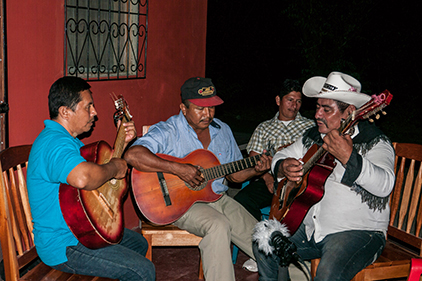
This song about Ometepe was written by Anselmo Carrillo, Los Tigres lead singer and leader; that’s him on the right, with José Arce Rodriguez on bass guitar at left and Jehu Aleman Herrera on backup guitar.
“Chiqui Flada” is a humorous song for the country men of Ometepe: be careful, when you go to Managua and look at the girls in mini-skirts, that you don’t get hit by a truck.
A couple days ago, we hired a guide, one of the English students, to take us to see some petroglyphs. These were not the ones the tourists usually see, because these were on private land, there was a fee—120 córdobas for five people, about $5 US.
The day of the hike was going to be hot—90°F and 70% relative humidity. The petroglyphs were about 4 miles south of Merida. We set off as early as we could, but would still have to hike back under the midday sun. But the town of San Ramon was a liquid resupply point in both directions, located a little more than a mile before the petroglyphs.
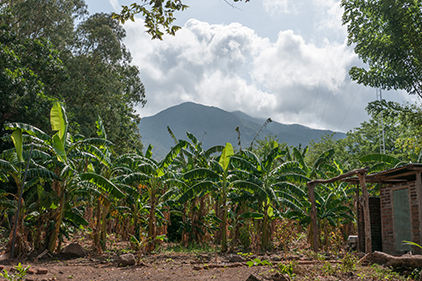
Plantain is a major crop on Ometepe. There are two types, here, a sweet version and one that is more like a potato, just a starch. In the background, the Maderas Volcano.
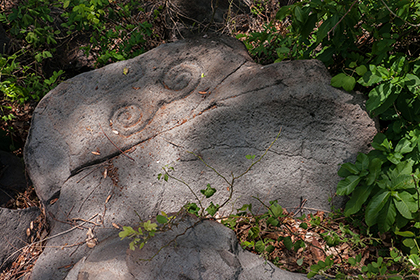
Are the two spirals depicting the two volcanoes that make up Ometepe?
The audio here is of parakeets—not the pet variety, but large parakeets. They took up an hour-long residence in a large tree behind the house.
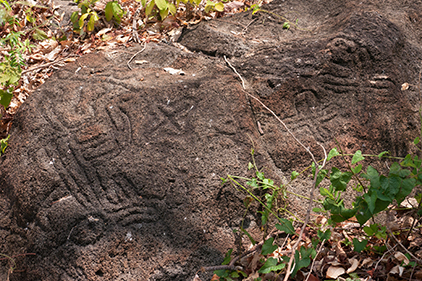
A couple of petroglyphs in the uplands above the lake.
A sound made by the great-tailed grackle. These birds have a varied call repertoire.
There are dozens and dozens of petroglyphs, both on an upland area and down at water level. In fact the petroglyphs at the edge of the lake are only visible during the dry season.
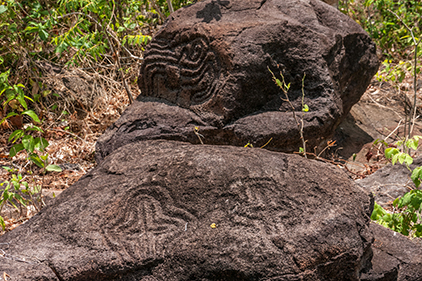
These birds are unknown (to me).
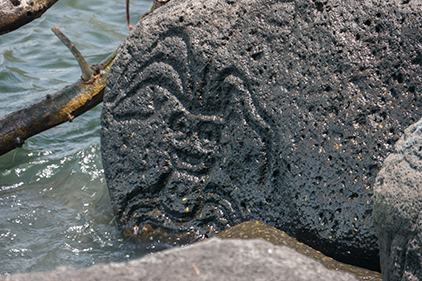
One of the petroglyphs that is submerged under the lake waters except during the end of the dry season. What culture did this come from? The petroglyphs are said to be abut 3,000 years old.
I wanted to mention Chicken Buses. You can find a lot about them in Wikipedia. Basically they are American school buses that have become the vehicles in a bus transit system. What I wanted to do in pictures and sound, is to give you a feel for the bus. The one that runs through Merida has some fixed stops, but will pick up anyone, anywhere and drop off likewise. The buses will also transport packages. Cost is very nominal. Check out the pictures and audio files.
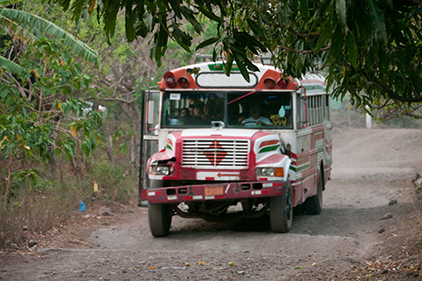
The 5:30 AM chicken bus to Moyocalpa. Cost is less than a US dollar.
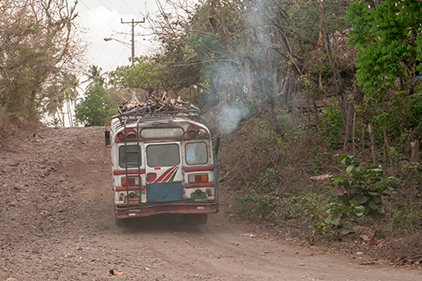
The Chicken Bus climbing a steep, rough grade in Merida.
One thing to mention, the road to Merida is very rough in places. The photo is just one example. There are plans to improve it, pave it, but they have been put off. Maybe next year? It is interesting that the route through Merida to San Ramon is the volcano eruption route, in case Concepción Volcano erupts, which it last did in 2010. Given how rough sections of the road are, it would seem a serious evacuation plan would include upgrading the road.
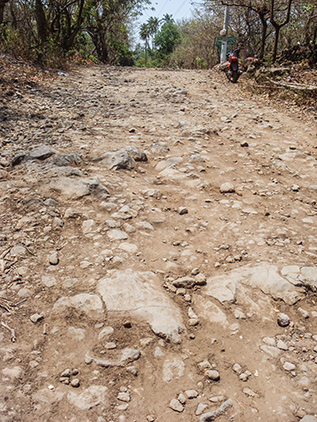
An example of the rough road surface.
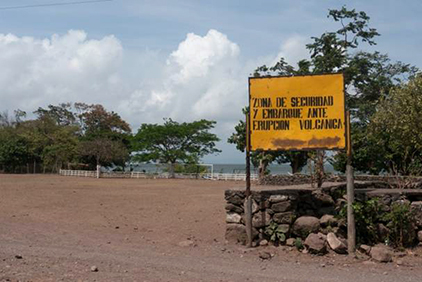
If Concepción Volcano should ever erupt in a big way, the evacuation route off the island leads through Merida to San Ramon.
I will close, today, with a couple audio files that I am happy to have—the chirping of a gecko and the hoarse barking of howler monkeys. Recording either sound has been frustrating and elusive.
This house has several geckos but getting a recording that was not adversely contaminated with bird song from outside, or the refrigerator motor hum inside was a challenge. I’d set up a mic (aimed straight up—the geckos are almost always in the rafters) on a tripod in the empty house and hope for two things; that the gecko would chirp in front of the mic and that the refrigerator was not running at that moment.
This is the bedroom gecko and was recorded with the stereo mic on a tripod which was on a bed. This was the voice of one of the six geckos residing in this house.
As for the Howler Monkeys, they always seemed to be too far from where I was to even hear well, let alone where I could set up a good mic position. This time, they almost all came to me.
I had just come back from a morning “dawn chorus” exploration and heard some howler monkey “gruffing” that seemed fairly close. I gathered my gear, again, and walked back up the trail. They went on for some time.